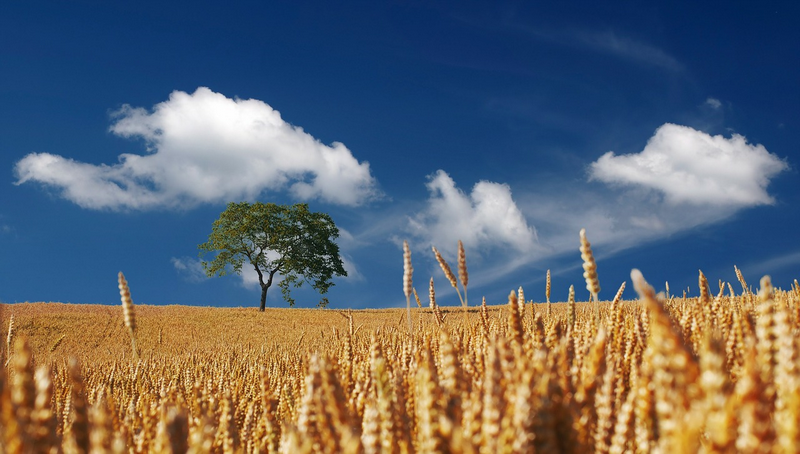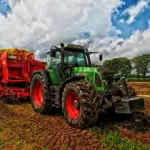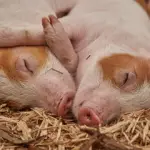
If you’ve seen a property on your search for a new home and you discover it’s next to a cornfield, you may ask is this a good or a bad thing and should you buy it? There are a number of pros and cons of living near a cornfield, which is why it’s important to consider carefully before you buy a house next to a cornfield.
The pros of living next to a cornfield include more space and privacy with cleaner air, and where you’ll enjoy less noise and exhaust pollution from traffic. Whereas the cons of living next to a cornfield include risks of pesticide drift and associated health problems plus living with more rodents.
Please also take time to read this article to discover how you could save over £70,000 on your next mortgage if you sell your house and rent before buying again. Even I was amazed when I did the calculations!
As with anything, there are always pros and cons to consider. As far as buying a house next to a cornfield the pros and cons include.
What are the pros of living next to a cornfield?
- Clean country air: Living next to a cornfield means the house is likely to be in the countryside, which means enjoying clean fresh country air, with less noise and exhaust pollution when compared to city living.
- Great if you work on the farm: It will be a big benefit if you work on the farm, as you are likely to be close to work and could walk to work.
- Job opportunities for your children: Farms are great for your children to get part-time jobs to earn pocket money, so if you live near a cornfield you will be near the farm where they may get a job.
- More valuable property: Properties next to cornfields with great views in the countryside tend to be worth more than homes in built up areas.
- More land for your money: You’ll be able to afford more land and a larger garden in the countryside when compared to town houses.
- Great walks: Living next to cornfields and farmland means you have the opportunity for great countryside walks, which is even better if you have a dog. But make sure to respect the countryside and be careful about trespassing on farmland.
- Privacy: Living near cornfields and in the countryside normally means you have more privacy from neighbours.
- Space: Often times house next to cornfields have bigger gardens and more space, which is great for children growing up.
- Peace and quiet: Living near cornfields means it will mostly be quiet and away from the hustle and bustle of noisy main roads and cities.
- Wildlife watching: Living in the countryside and near cornfields means you’ll be close to nature and wildlife and bird watching.
- Less crime: There’s less chance of crime living in the countryside when compared to city-living.
- Friendly communities: Due the fact there are less people living in the countryside, they tend to be more friendly and say hello to strangers. There’s a great community spirit living in the countryside.
What are the cons of living next to a cornfield?
- More rodents: There are more rodents near farms and cornfields, which includes rats and mice that will often get into nearby houses for food and warmth, especially in the winter after the crops have been harvested.
- Bad for people with allergies like hay fever: If you have allergies like hay fever, living next to a cornfield and in the countryside you may mean you suffer more from this allergy.
- Cornfields produce lots of dust during harvest: Cornfields can be very dusty, especially during the harvest which can travel to nearby homes. But this only happens for a short period and only once a year.
- More snakes: Where snakes are to be found they are more likely to be found near cornfields and on farmland, as snakes will be attracted by the rodents. If you know your region doesn’t have snakes, cross this con off the list.
- Aerial crop spraying: Some farmers use aerial crop spraying with planes and helicopters, which can be harmful if breathed in. But crop spraying is only done a few times a year.
- Mud on the Roads: In the winter and when it rains, farming vehicles going to and from the fields spread mud on roads which makes a real mess.
- Noisy farm equipment: Farming equipment can be noisy and will drive up and down the roads near the farm, which is especially true of combine harvesters. But this only happens for a short period and only once a year.
- Early starts and late finishes: Farmers start work early and at certain times of the year work late, so you may get disturb by noises from this activity.
- Exposure to pesticides: Living next to a cornfield leaves to open to the risk of pesticide drift, and pesticides have been linked to a number of health concerns.
- Distance from shops and amenities: Houses in the countryside are often a significant distance from shops and amenities, which means you need a car to get around.
- Kids can get lost: There is a chance that kids can get lost in cornfields when playing.
- Slower internet speeds: Internet connections are not kept up to speed as well as those in towns and cities.
- Can be isolating and lonely: Living in the countryside is not for everyone and it can be very isolated.
Weighing up the pros and cons of living next to a cornfield
Whilst on the face of it there are more cons than pros of living next to a cornfield, this shouldn’t necessarily put you off from buying a house next to a cornfield. But make sure to do your research before you buy.
I’ve lived in the countryside for a large part of my life, and lived next door to farms and cornfields too, and I prefer countryside living to living in a city any day of the week.
As you try to decipher the pros and cons of living next to a cornfield, it’s going to be a matter of looking at each one of the cons of living next to a cornfields and deciding if any of these bother you. Ask the question; are any of them deal breakers?
Having lived in the countryside, I’ve also had to live with having many rodents near my houses for years. I’ve even had rats in my house, my parents had rats in the thatch of the thatched cottage they owned where I grew up. I also once caught 30+ mice in one house I had, but rodents would not stop me from living in the countryside or next to a farm.
Before buying a house next to a cornfield, and as you weigh up the pros and cons of living next to a cornfield, make sure to visit the house on more than once occasion.
Is it bad to live next to a cornfield?
It can be bad living next to cornfields, as families living near farming areas experience increased rates of health disorders. Research has shown that pesticide levels in children that lived near to farming areas were higher than in children living over 1/4 mile away. Plus the risk of foetal death from birth defects is higher for those living near farming areas.
“Research results showed that families living within 1/4 mile from the orchards had house dust concentrations 7 times higher than found in the reference homes. Pesticide levels in urine were 5 times higher than in children living more than 1/4 mile away. Children living within 200 feet of pesticide sprayed groves had the highest blood levels of pesticides and contaminated house dust.”
Source chem-tox.com
Please don’t forget to read this before you leave…
Please don’t forget to also read this article to discover how you could save over £70,000 on your next mortgage if you sell your house and rent before buying again. As I said earlier, even I was amazed when I did the calculations!
I hope you’ve enjoyed this article about the pros and cons of living next to a cornfield
If you’ve enjoyed this article about “the pros and cons of living next to a cornfield” please share it on your favourite social media site.
Also, if you have any questions, please feel free to comment below too. Please also share any of your experiences with properties you’ve bought. Alternatively, if you need more help, please feel free to contact us on our contact us page here. Or join the discussion and ask your question in the property forum.




